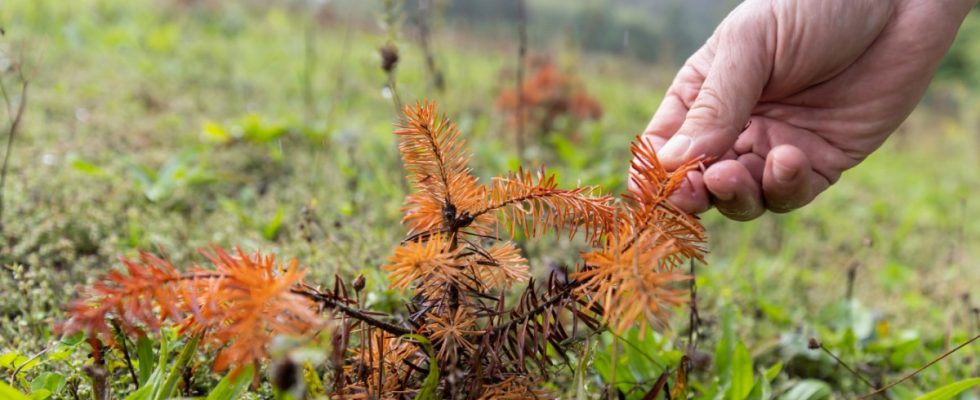In view of climate changes, Bavaria’s Christmas tree growers have to think about different planting times and put more work into the soil. “The main planting time is now actually September and October,” said Thomas Emslander from the Bavarian Christmas Tree Growers Association. Then the tree has enough moisture and time to take root. Anyone who continues to plant young Christmas trees in March or April as before will increasingly have to contend with springs with little rain and summers that are far too dry and hot. In Franconia in particular, this has been the downfall of many young Christmas trees this year. In the south of Bavaria the situation is more relaxed.
Uwe Klug, Christmas tree producer in the Lower Franconian Mittelsinn on the Bavarian-Hesse border, has seen many newly planted conifers die due to a lack of water. “Very, very many have dried up because May and June brought almost no rainfall.” The old stands, i.e. the trees that will be felled this year or next year, are doing better. “In August we had over 200 liters of rain,” said Klug. “This has never happened in the last 20 years – and in August, you have to think about it.” Therefore, the trees would be in good shape for this year’s Christmas.
It takes seven, eight or more years for a Christmas tree to be big enough to be sold. In order to ensure that there are still enough Christmas trees in a few years despite the losses in the past two summers, farmers have to compensate for the loss of young plants by planting new ones in the fall. However, the additional costs cannot be passed on directly to the consumer. “We don’t want to overtax the customer.”
According to Emslander, climate change doesn’t just bring changes to the planting season. Christmas tree producers now have to invest more time in nutrient-rich soil than they did a few years ago. Under-sowing, less fertilizer, stronger soil root penetration, more animals such as earthworms, evaporation protection, humus formation: the aim is to retain water even in poor soils. “Cultivation is becoming much more sensitive,” said Emslander.
According to the Forestry Ministry, around four million Christmas trees are sold in the Free State every year, most of which come from specially cultivated crops. Around 400 growers are registered. The Nordmann fir is the most popular with customers, followed by the blue spruce. According to Emslander, with the Nordmann fir, producers have a tree that comes from southeastern Europe and can withstand drought well. Their market share in Bavaria is 75 to 80 percent. The blue spruce could be even less affected by lack of water.
According to Emslander, the meter of Christmas tree will cost almost one euro more this year than last year. The reasons include the increased minimum wage and higher energy costs. For one meter of Nordmann fir it costs 21 to 28 euros, depending on the quality. The blue spruce is significantly cheaper – eleven euros to 15 euros for one meter.

